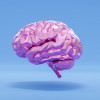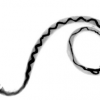The Mathematics of Predicting the Course of the Coronavirus

In the past few days, New York City’s hospitals have become unrecognizable. Thousands of patients sick with the novel coronavirus have swarmed into emergency rooms and intensive care units. From 3,000 miles away in Seattle, as Lisa Brandenburg watched the scenes unfold—isolation wards cobbled together in lobbies, nurses caring for Covid-19 patients in makeshift trash bag gowns, refrigerated mobile morgues idling on the street outside—she couldn’t stop herself from thinking: “That could be us.”
It could be, if the models are wrong.
Until this past week, Seattle had been the center of the Covid-19 pandemic in the United States. It’s where US health officials confirmed the nation’s first case, back in January, and its first death a month later. As president of the University of Washington Medicine Hospitals and Clinics, Brandenburg oversees the region’s largest health network, which treats more than half a million patients every year. In early March, she and many public health authorities were shaken by an urgent report produced by computational biologists at the Fred Hutchinson Cancer Research Center. Their analysis of genetic data indicated the virus had been silently circulating in the Seattle area for weeks and had already infected at least 500 to 600 people. The city was a ticking time bomb.









































































